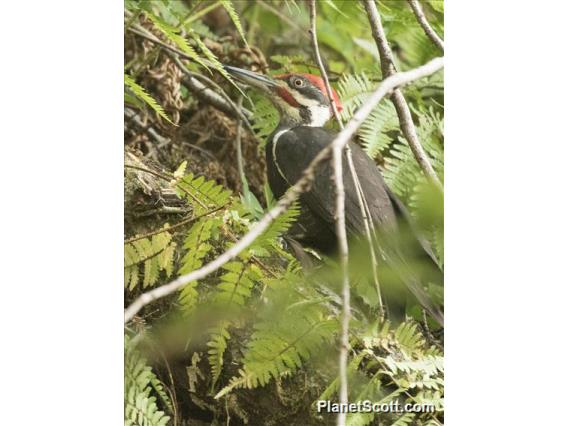Pileated Woodpecker (Dryocopus pileatus)






About Pileated Woodpecker (Dryocopus pileatus)
- Kingdom: Animals
- Phylum: Chordates
- Class: Birds
- Order: Woodpeckers, Barbets, Toucans, and Puffbirds
- Family: Piculets and Woodpeckers
The pileated woodpecker is a large, crow-sized woodpecker with a prominent red crest, white neck stripe, and a mostly black body. These woodpeckers are native to North America, where it is the largest confirmed extant woodpecker species, and they are the third largest extant species of woodpecker in the world, after the great slaty woodpecker and the black woodpecker. It inhabits deciduous forests in eastern North America, the Great Lakes, the boreal forests of Canada, and parts of the Pacific Coast. The woodpecker is primarily an insectivore and eats insects that live in trees. Pileateds are famous for making large, nearly rectangular carvings into trees, which they either use to extract prey inside the tree or to make a nest. They are a species with a large range and an increasing population, causing them to be categorized as a species of "least concern" by the IUCN in 2016.
Source: Wikipedia
Trips
Visits
-
2002-05-05
Muir Woods National Monument, United States of AmericaPecking away at a snag, I had a clear view of it for several minutes. -
2011-07-10
Santa Fe River, United States of America -
-
-
-
2016-08-24
Butano State Park, United States of America -
-
-
-
-
-




